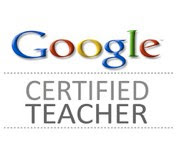
Lifelong Kindergarten :: MIT Media Lab via kwout
As part of their mission to "sow the seeds for a more creative society," the MIT media lab has developed a free program called Scratch that encourages the kind of open-ended exploration and creative problem solving that is not on the test, but that promotes the trial and error learning that is the heart of math, science and technological innovation. The beauty of Scratch and similar applications is that while the processes they engage are complex, most children are naturally drawn to them and find them fun. Kids ask to "play Scratch."

In addition to Scratch, here are some other recommended resources for open-ended, creative exploration:
Whizzball -from Discovery Education, whizzball is a puzzle creator. Students can design puzzles, submit their puzzles for others to solve and solve puzzles created by others. I have found this to be challenging and fun for grades 1-5.
Fantastic Contraption- physics challenge. Use the materials provided to create a contraption that solves the challenge of getting something from point A to point B. There are multiple challenges and endless solutions. I am using this with a first grade STEM enrichment class, and they LOVE it. I could see it being popular with older students as well, although I haven't introduced to other grades yet.
Lego Digital Designer - design tool using virtual legos.
PHUN - 2D physics sandbox. This one is more advanced. I recommend viewing at least one tutorial before jumping in to play. I used this with 5th grade, and it was fun (phun) at first, but many of them became frustrated quickly.






No comments:
Post a Comment